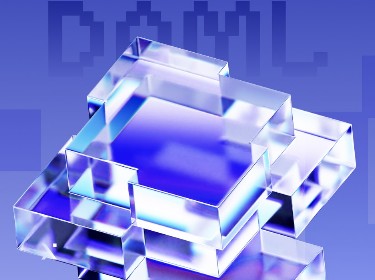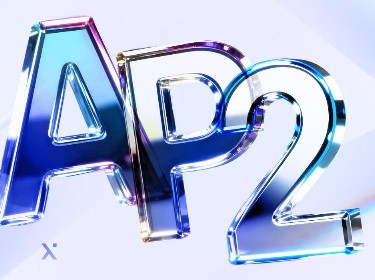The former Twitter CEO has announced the development of Web5 — a new decentralized web platform that promises to completely change user experiences. So, what should we all expect from the new web?
According to Jack Dorsey, Web5 is the new vision of the internet that allows users to actually control their own data rather than giving it to third parties and authorities. Web5 promises to bring revolution to the existing internet, and comes as an alternative solution to Web3, which is currently being developed.
Read on to find out the most interesting features of Web5. We will discuss Web5’s key components, explore its benefits and limitations, compare Web5 and Web3, and talk about how your business can benefit (or not) from Web5. Let’s go!
What is Web5?
Web5 is the next global web iteration. It combines Web2 and Web3 and grants users full control over their data and identity. To ensure complete decentralization, Web5 will be based on the Bitcoin blockchain.
Web5 will allow developers to create decentralized web apps (DWA) with verifiable credentials and decentralized web nodes. It relies on decentralized identifiers that allow users to own and control their data, in contrast to the current system where identifiers are controlled by intermediaries.
The Web5 platform is currently being developed by The BlockHead — one of the Bitcoin business units founded by Jack Dorsey. Dorsey is a programmer, internet entrepreneur, and former co-founder of Twitter. Recently, he expressed criticism of Web3 and its limitations, believing that it is owned by venture capitalists and limited partners and is not as decentralized as it claims to be.
Web5 is therefore set to embrace the convenience of Web2 while leveraging Bitcoin’s decentralized nature, forming a superior solution compared to the vision promoted by Web3 supporters.
How does Web5 relate to emotional intelligence?
A distinctive feature of Web5 is that it aims to become a linked web that is not only intelligent but also emotional. Emotional intelligence refers to the ability to understand, use, and manage emotions in positive ways to communicate efficiently, empathize with others, and overcome challenges.
Leveraging emotional intelligence, Web5 will be able to directly communicate with its users (like a personal assistant might), just as people communicate with each other.
The arrival of the Internet of Things (IoT) and smart home devices that can store and process the user’s emotional profile to provide services gives us clues about what an emotional web will look like. It is also likely to use galvanic skin response (GSR) technologies, which apply biometric sensors in wearable devices to recognize emotions and stress levels.
Check out our IoT-driven Smart Home App that gives homeowners full control of their smart devices
How does Web5 work and what are its key components?
![]()
Web5 is made up of five main components that help provide immersive user experiences while ensuring decentralized identity. These components include decentralized identifiers (DIDs), decentralized web nodes (DWNs), and verifiable credentials. Web5 also leverages a self-sovereign identity service (SSIS), and self-sovereign identity SDK (SSI SDK).
Let’s deep-dive into each of these components to get an idea of how they form Web5.
Decentralized identifiers
A DID is a globally unique permanent identifier that doesn’t need a centralized authority and is commonly created and registered cryptographically.
At present, we all rely on central identifiers that are typically held on a central database and controlled by some third-party organization. Practically every web or mobile user is reliant on identifiers from intermediaries such as Google or Facebook, email providers, and mobile network operators. This affects our privacy as all the (meta)data gathered by these parties are out of our control. Just remember the massive data breach case on Facebook when 530 million people had their personal information leaked.
Decentralized identifiers allow us to avoid these problems by giving users the power to control their data. DIDs normally work with blockchain or any other decentralized system and remove the need for the identity providers, certificate authorities or centralized registries that we all got used to.
A decentralized identifier consists of a unique uniform resource identifier string which is used as an ID and linked to a unique, user-controlled, self-sovereign identifier in a target system, for example the Bitcoin blockchain.
As personal data is not stored on the blockchain, the decentralized identifier acts as a URI that associates the subject of the DID, for example a person, object or company, with a DID document stored off-chain. DID documents are JSON files that describe how to interact with the DID subject. They are stored in decentralized storage systems, such as IPFS.
DIDs can be deactivated only by their users, which means that they are censorship-resistant. In theory, the decentralized network is capable of processing thousands of decentralized identifier operations per second.
For an example of digital identifiers in action, here’s a good one: Tykn’s Self-Sovereign Identity Platform, launched by the Turkish government and the UNDP. It is aimed at optimizing and streamlining the process of issuing work permit documentation for refugees.
The platform uses the self-sovereign identity technology that makes digital documents tamper-proof and verifiable anytime anywhere, thereby helping millions of refugees become financially independent.
Another example of using decentralized identifiers is Echo — a Layer 2 protocol for building smart contracts and decentralized applications with EVM support developed by PixelPlex. To ensure greater data safety, our team has developed the protocol’s own DID mechanism, which was approved and listed by the W3C (The World Wide Web Consortium).
Decentralized web nodes
Decentralized web nodes act like a mesh-like datastore that allows an entity to operate multiple nodes that all sync to the same state. To put it simply, in Web5, decentralized web nodes will serve as places to store data that is linked to a given decentralized identifier. It means that we can host personal data ourselves, in our own data stores.
The key benefits of DWNs include security and compatibility with any network. With DIDs and DWNs combined, it is possible to create an entire web of secure messaging, data storage, and credential sharing.
Decentralized web nodes can be hosted anywhere, be it on a phone, a computer, or another device. It is also possible to replicate them across your devices and clouds with all the data being synced. It’s likely, though, that some users will still be more comfortable with others hosting their web nodes simply because it’s more convenient.
Therefore, there will be new vendors offering to host users’ web nodes for them. The good part is that on Web5, users will be able to encrypt all their personal data, thus maintaining their privacy.
A good example that envisions the use of DWNs is BlueSky — a decentralized version of Twitter. In it, user tweets and connections are not stored within the application. They are stored with users, meaning that users can present their content on any decentralized social media app, not just BlueSky.
Verifiable credentials
Verifiable credentials are referred to as fully ratified W3C standards that work hand in hand with DIDs to ensure trustless interactions. Verifiable credentials represent information found in physical credentials, for example a passport, driver’s license, or bank statement.
So while decentralized identifiers act as a form of digital stamp, making it possible to check the authenticity of data, verifiable credentials contain the information that needs to be checked and verified.
Self-sovereign identity service
SSIS is aimed at facilitating user interactions on Web5. The service will interact with user interfaces, wallets, DWNs, and other web infrastructure. Being agnostic to any specific business or use case, SSIS is designed to lower the barrier of entry for all individuals or organizations that want to build a Web5 stack.
The service is projected to be run by a single organization and assumes external authentication. It also assumes no infrastructure requirements while providing flexibility to multiple deployment models, databases, user interfaces, and more.
Self-sovereign identity SDK
Self-sovereign identity SDK encompasses standards related to self-sovereign identity. Its major goal is to support decentralized identifiers and verifiable credentials, as well as their associated standards.
Interacting with decentralized identifiers, it will focus on verifying, encrypting, and decrypting data with cryptographic keys. By interacting with verifiable credentials, it will also create and use data schemas, facilitate credential application, and more.
What are the benefits and limitations of Web5?
Web5 has multiple features that will improve the user experience compared to traditional web development. . The most important of these are the emotive elements of the internet and users’ ability to control their identity and own their data. Let’s briefly discuss each.
Control of your own identity
Here’s a simple example to clarify this point. Imagine you have a digital wallet where you securely manage your personal data, your authorizations, and your identity for external apps and platforms.
When you decide to register on a third-party app (e.g., Instagram) you don’t need to create a profile and pass your data to third-party services. Instead, you can use your digital wallet, and all your personal info will stay with you no matter which app you use.
Own your data
Web5 allows you to store all your data on decentralized web nodes. Imagine you use a social app (Instagram in our case) where you have multiple posts and connections. Whenever you decide to change to another application, all your social identity will go with you, meaning that you have full control over all the data you post.
Emotive elements of the internet
It is expected that Web5 will be able to sensor, record, and communicate the entire range of human emotions, thus providing each user with a personalized experience. This idea is closely related to smart home devices that leverage the power of the Internet of Things to provide a personalized experience while automating actions such as adjusting the temperature or turning on and off lights.
Take a look at the case study that discusses how to build an IoT-based smart home application
As for the limitations of Web5, the major downside is that the concept is still in its infancy and it is hard to predict whether or not it will develop the way it is supposed to.
What is the difference between Web3 and Web5?
![]()
Both Web3 and Web5 envision a decentralized internet that is not controlled by centralized authorities, including governments and big tech.
However, according to Dorsey, Web3 is not truly decentralized, but instead controlled by different “venture capitalists and limited partners”. It could be viewed as a Web2 but built leveraging blockchain development. Web5, in contrast, represents an extra-decentralized internet where users will actually own their data, meaning that intermediaries can’t store or control it.
Simply put, Web5 will be a combination of Web2 and Web3 that will allow users to own their personal information.
Another difference between the two is that Web5 will focus much more on individuals by providing users with personalized experiences and focusing on users’ emotions.
Web3 will use AI and ML where machines will be able to interpret information like humans do. Web5, for its part, will enable computers to respond to emotional cues based on the electrical signals in users’ brains, which is impossible with Web3.
And last but not least, Web5 is currently the only solution that promises to allow users to seamlessly switch from one app to another, since their data will be stored in their digital wallets.
When will Web5 be launched?
Web5 is currently under open-source development. The BlockHead hasn’t yet announced an official release date, but there are already some details that point toward the Web5 design roadmap.
Currently, the goal of The BlockHead is to build a class of fully decentralized protocols and apps that provide for social communications, financial interactions, and so on, and will be filtered through decentralized apps that allow users to store their data with them. Therefore, the company is focused on the development of:
- Decentralized identifiers
- Decentralized web nodes
- A self-sovereign identity service
- A self-sovereign identity SDK
How can your business use Web5?
![]()
Web5 will be developed in such a way that you can deploy decentralized yet unified web apps on top, giving users frictionless access to the blockchain’s capabilities while enabling them to control their data.
Your decentralized apps on Web5 will work as Progressive Web Apps, but thanks to a decentralized web node SDK they will go completely serverless and the data won’t be stored within them.
There are a variety of decentralized apps that you can consider building on Web5, from music platforms to travel applications. Web5 will allow you to provide a personalized experience for your users while enabling them to always keep their personal data inviolable.
For example, travel organizations can build decentralized web applications that would allow users to store all their tickets, preferences, and reservations in decentralized web nodes. It would help users unify their data instead of storing it across multiple hotels, airlines, and travel apps. By using DWNs, users can grant their hotel, airline, or car rental providers the ability to add objects to their collection of trip-related data. Meanwhile, users can grant any app they choose access to tickets and reservations stored in their DWNs.
![]()
Similarly, you can build an application that would allow users to store their healthcare data, such as patient history, prescriptions, and test results in their decentralized web nodes. This way, users can grant access to healthcare providers or medical centers that could view their personal data while being able to deny access any time they want.
Closing thoughts
If Web5 delivers on its objectives, we’re likely to see mass adoption of blockchain-based decentralized applications. Obviously, it’s too early to see how the thing will unfold, but Web5 is already in active development by The BlockHead with clear goals and a roadmap.
If you want to be among the early adopters, we recommend that you wait no longer to consider how your business can adapt to new realities. Whether it’s a change in business strategy or the implementation of a decentralized web app, partnering with a reliable mobile app development company in New York can provide the expertise and local insights needed for success. After 9 years in the blockchain development business, our custom blockchain development company can help you achieve your business objectives.




